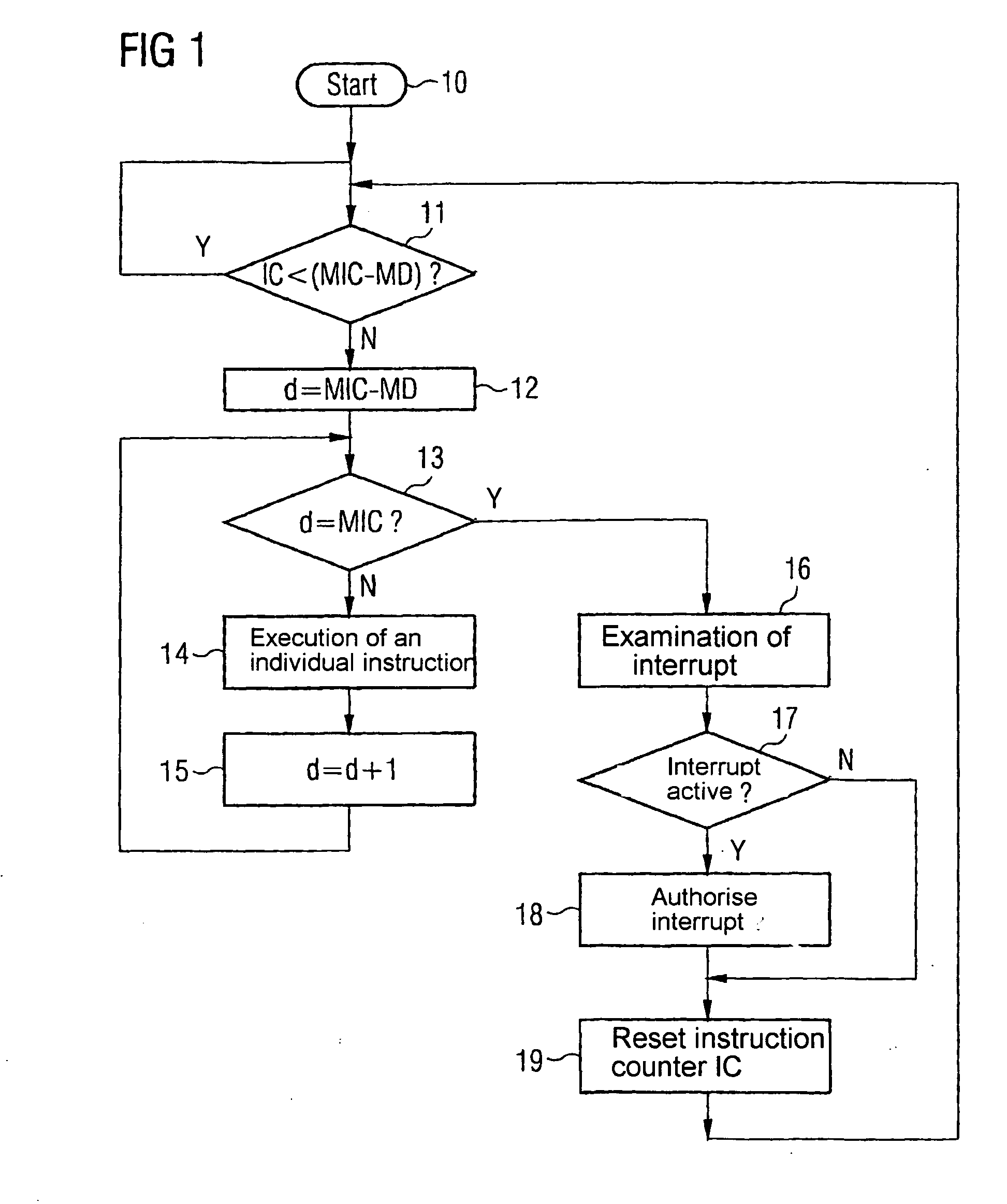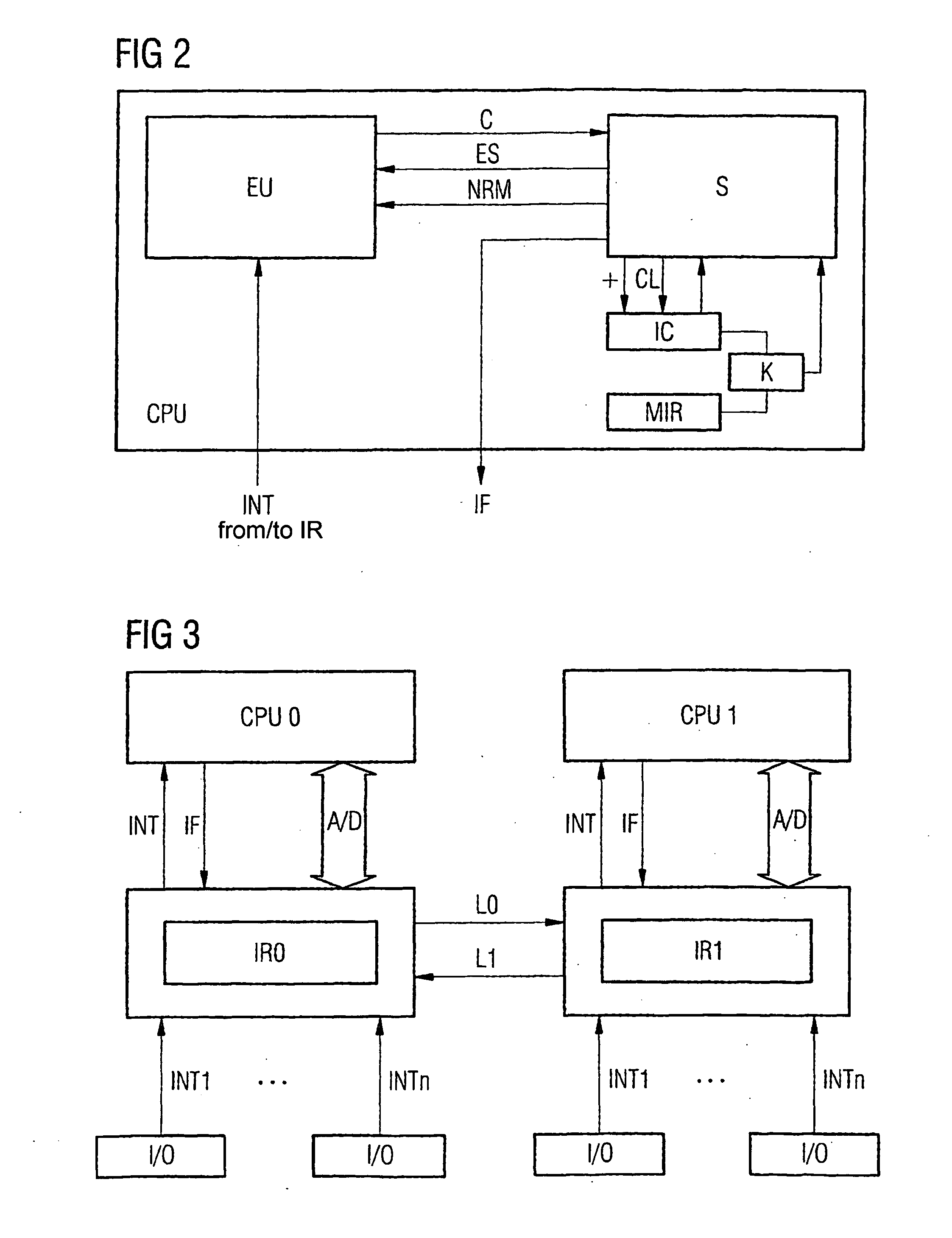Method for event synchronisation, especially for processors of fault-tolerant systems
a technology of event synchronisation and processor, applied in the field of method and processor, can solve problems such as failure of the entire system, software-based solution however not being very flexible, and limiting the range of useable (application) softwar
- Summary
- Abstract
- Description
- Claims
- Application Information
AI Technical Summary
Benefits of technology
Problems solved by technology
Method used
Image
Examples
Embodiment Construction
[0043]FIG. 1 shows the inventive method graphically in the form of a flow diagram. The following values have to be determined or initialized before the start of the sequence:
[0044] A counter IC (Instruction Counter), which contains the number of instructions or machine commands processed by the CPU.
[0045] A number MIC (Maximum Instruction Counter) of instructions, after which the CPU should change to special operating mode to process external events.
[0046] A number MD (Maximum Deviation) of instructions, which takes into account the maximum indeterminacy of the interruption of the CPU occurring due to the parallel nature of command execution.
[0047] The sequence starts with the current value of the command counter IC being compared with the difference between the values MIC and MD (block 11). If the value of the command counter is smaller than this difference, command processing is continued in standard operating mode; parallel execution of instructions is possible. If the value ...
PUM
 Login to View More
Login to View More Abstract
Description
Claims
Application Information
 Login to View More
Login to View More - R&D
- Intellectual Property
- Life Sciences
- Materials
- Tech Scout
- Unparalleled Data Quality
- Higher Quality Content
- 60% Fewer Hallucinations
Browse by: Latest US Patents, China's latest patents, Technical Efficacy Thesaurus, Application Domain, Technology Topic, Popular Technical Reports.
© 2025 PatSnap. All rights reserved.Legal|Privacy policy|Modern Slavery Act Transparency Statement|Sitemap|About US| Contact US: help@patsnap.com



